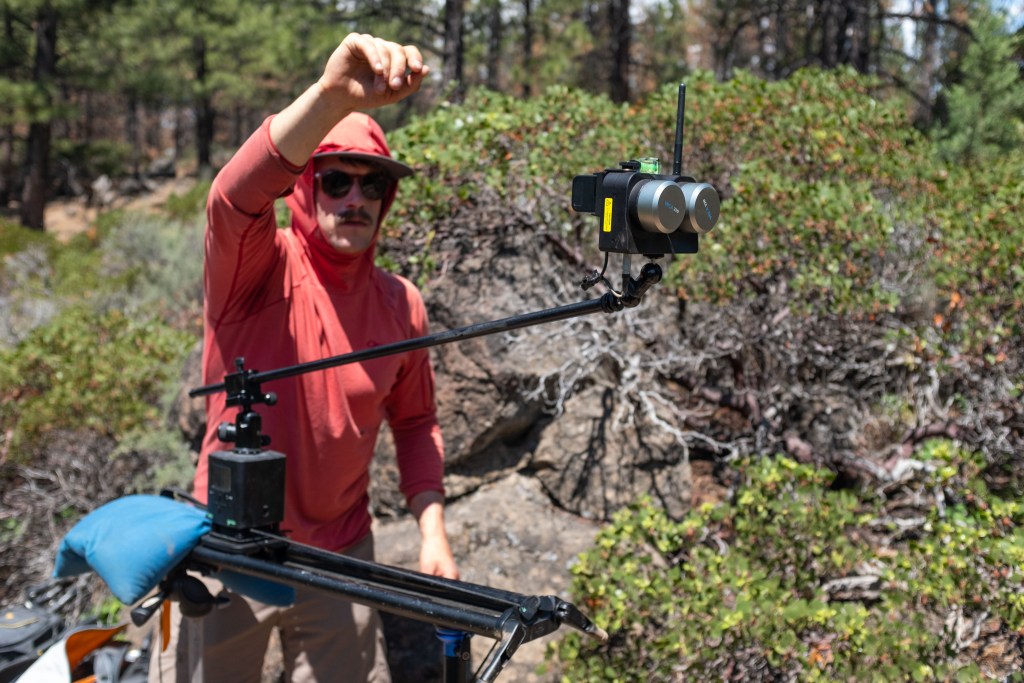This op-ed reflects the opinions of Graham Zimmerman, a professional climber, filmmaker and cofounder of Bedrock Film Works.
When I was 24 years old in 2010, a 1989 pickup truck with a built-out wooden bed frame covered by a black topper was home. With no permanent address and few plans beyond the next excursion, I was free to think and travel as I pleased. Between expeditions to Alaska and the Himalayas, I bounced around Colorado, California and Canada, seeking steep swaths of granite and frozen waterfalls. Life was simple. My focus felt pure. I had no idea how much my world would be changed by a technological revolution on the horizon.
At that point, my primary technological link to the world was a basic flip phone. I never felt as if more was needed. Occasional phone calls and texts provided all the additional communication that was necessary. Email checks while grabbing a coffee or filling up the gas tank were sufficient. And tuning in to a local radio station through the truck’s single working speaker was more than adequate as I rambled from place to place.
On an autumn day in Reno, Nevada, I was preparing to go climbing in the Sierra Range with my friends. But first, I needed to address the matter of my broken flip phone. Several impacts, screen cracks and the occasional rainstorm had finally caught up with the device. I was disappointed that I had to take time to purchase a replacement, but I expected the side trip to be uneventful. As it turned out, this simple task would precipitate one of the more profound technological shifts in my life: I purchased a smartphone.

At that point in time, folks in my community weren’t yet talking about the pitfalls of being over-connected, and we had yet to hear about smartphone addiction. On that brilliant fall day, I held my new phone in my hands and marveled at the plethora of available apps and features. I was amazed by the quality of photos the new gadget could capture and I wondered if it might eliminate my need to pack a camera in the mountains. I video-called my mom. I texted my sister. I took some photos. I checked the weather. What I did not do was pause to consider the implications.
Nearly a decade later, I run a film company, own a home and continue to climb all over the world—and connectivity and technology play an essential role in my life. I attempt to harness the power of the smartphone that is currently nestled in the pocket of my worn-out jeans, but it takes a lot of work. We are in a love-hate relationship. The challenge is persistent. I look at our society and wonder what a little more intention regarding these wonders of technology might have provided us, or allowed us to avoid. I look at my personal life and try to justify the time and energy I spend on social media. I am dazed by the barrage of news alerts and notifications and updates. I am dumbfounded by the back and forth of texts, calls and emails, and I long for the days when instant responses weren’t the norm. But now I, too, get impatient waiting for replies. Perhaps I could do a better job managing my relationship with technology. Perhaps I could be more proactive. Is there a better way to savor the ease of communication, connection and delight in our shared social networks?
Now there’s something new on my tech radar: virtual reality (VR). Virtual reality creates artificial environments and presents them to us in such a way that we can suspend our disbelief and immerse ourselves in a world beyond our own. Recently, my business partner, Jim Aikman, and I won a contract to attend a virtual reality workshop presented by leading tech brands. We were given the opportunity to study, learn and create a series of five virtual reality videos using cutting-edge technology. This project, more than any other project I have worked on, gave me serious pause.

As storytellers and the owners of Bedrock Film Works, Jim and I are deeply invested in inspiring people to get outside, engage with nature and become stewards of the planet. At face value, this immersive, virtual reality framework feels contrary to that, given that VR requires us to disengage with the real world and engage with a virtual world instead. So, why did we take it on?
“I don’t want virtual reality to have the same unanticipated impacts on my life and my community that smartphone use has.”
The answer is simple. I don’t want virtual reality to have the same unanticipated impacts on my life and my community that smartphone use has. Instead of plunging recklessly into this new virtual world and dealing with the repercussions down the road, I want to take a more proactive role. Along with others, I want to seize this opportunity to consider the benefits and challenges of life with VR. I want to implement good practices now, not later. Technology continues to develop at a breakneck speed, and I predict that virtual reality, in some form or another, will be commonplace in the next decade. It will impact how we engage with the world. It’s up to us to determine if that change will be positive or negative.
The potential benefits of virtual reality are far-reaching and unprecedented. VR offers a chance to walk in another’s shoes, opening up new opportunities for learning and the development of empathy. It provides a foundation for bridge-building and the celebration of differences. Immersing ourselves in an unfamiliar environment—being atop a snowy peak, inside a verdant rainforest, or along a windswept desert—can also help us understand more deeply why our planet and its inhabitants are worth protecting. And while these are just two examples of the many positive benefits virtual reality may bring to society, there are impending negatives that are just as profound. By detaching us from our oftentimes flawed society and world, virtual reality has the potential to increase ignorance and decrease our understanding of others. It has the potential to become something toxic that causes us to forget about natural environments and possibly even our own bodies. There is a potential future in which the virtual becomes more important than real. It’s up to us to ensure that doesn’t happen.
I want virtual reality to communicate connection, learning, excitement and adventure.
I want virtual reality to impact my world, your world and the next generation’s world for the better.

As a community, I want us to engage in this technology and have a conversation about what it offers, and to make intentional decisions about how we are going to apply it to our lives and craft the society and world in which we want to live.
In the interest of this, I’d like to invite you to view the series Jim and I created, titled “The Moment.” It’s about five athletes engaging with wild sports in wild places. I hope you’ll use it to help you understand these people and why they do what they do. And while you do that, I want you to think about the technology you use as well as what is on the horizon and consider, How can I use this and engage with it to make a positive impact?
Photo Credit: Jim Aikman
The film series can be watched on any desktop or mobile device. For the full experience, Zimmerman suggests viewing the films with a VR headset while wearing headphones.
